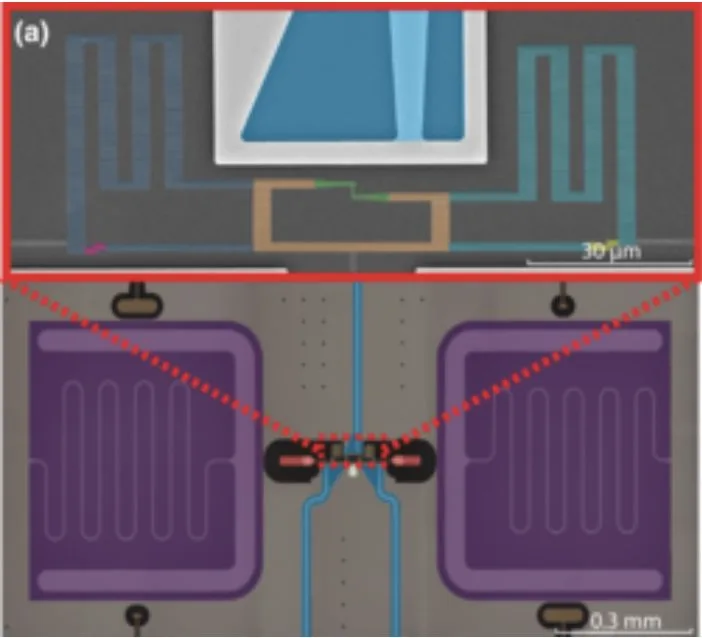The fluxonium qubit, a type of superconducting circuit, is a promising candidate for quantum computation due to its long coherence times and large anharmonicity. Researchers have developed a tunable inductive coupler that enables strong inductive coupling between two heavy fluxonium qubits, allowing for fast, high-fidelity single and two-qubit gates.
The coupler also allows for more precise control over the qubits, which is crucial for quantum computation. This research, conducted by scientists from various institutions, could potentially lead to more efficient and powerful quantum computers in the future. The findings were published in the American Physical Society journal.
What is the Fluxonium Qubit and Why is it Important?
The fluxonium qubit is a promising candidate for quantum computation due to its long coherence times and large anharmonicity. Coherence time refers to the duration a qubit can maintain its quantum state, while anharmonicity refers to the difference in energy between the first and second excited states of a qubit. The longer the coherence time and the larger the anharmonicity, the better the qubit is for quantum computation.
The fluxonium qubit is a type of superconducting circuit, which is a promising platform for the development of scalable, error-corrected quantum computation. This is due to many recent advances towards large-scale quantum processors and improvements on the performance of qubits and gate operations. These advances have relied on the transmon qubit, another type of superconducting circuit. However, the fluxonium qubit is a promising alternative to the transmon due to its attractive properties, including a nearly degenerate ground state and a large anharmonicity.
Compared to other qubits fabricated with similar material qualities, low-frequency qubits like the fluxonium have less dielectric loss and thus a slower decoherence rate. The large anharmonicity mitigates the speed limit for qubit operations in transmons and enables quantum gates that are as fast or even faster despite low qubit frequencies. In addition, one can flux tune the fluxonium qubit to be noise biased, increasing energy coherence at the expense of being more phase sensitive.
How Does the Tunable Inductive Coupler Work?
The researchers present a tunable coupler that realizes strong inductive coupling between two heavy fluxonium qubits, each with approximately 50MHz frequencies and approximately 5GHz anharmonicities. The coupler enables the qubits to have a large tuning range of XX-coupling strengths from 35 to 75 MHz. The ZZ-coupling strength is 3 kHz across the entire coupler bias range and 100 Hz at the coupler off position.
The tunable inductive coupler is inspired by designs from previous research to realize strong coupling between two fluxonium qubits. Each qubit is individually described by a Hamiltonian, a mathematical function that describes the total energy of a system. The Hamiltonian for a fluxonium qubit includes terms for the charging energy, the Josephson energy of the small junction, and the inductive energy.
The coupler allows for fast, high-fidelity single and two-qubit gates. By driving at the difference frequency of the two qubits, the researchers realize an iSWAP gate in 258 ns with fidelity 99.72%, and by driving at the sum frequency of the two qubits, they achieve a bSWAP gate in 102 ns with fidelity 99.91%. These gates are only five qubit Larmor periods in length.
What are the Advantages of the Tunable Inductive Coupler?
The tunable inductive coupler has several advantages. Firstly, it realizes a large interaction strength even for low-frequency qubits without involving higher energy levels. This enables the gate to take advantage of the full coherence of the fluxonium while avoiding any leakage to states outside the logical subspace.
Secondly, both the XX and unwanted ZZ coupling can be turned off, allowing for an operational spot for single-qubit gates. This is important as it allows for more precise control over the qubits, which is crucial for quantum computation.
Finally, the researchers demonstrate the tuning of the iSWAP and bSWAP gates and estimate their fidelities using various benchmarking protocols. This shows the practicality and effectiveness of the tunable inductive coupler in a real-world quantum computing setting.
What are the Implications of this Research?
This research has significant implications for the field of quantum computing. The development of a tunable inductive coupler that can realize strong inductive coupling between two heavy fluxonium qubits is a major step forward. This could potentially lead to more efficient and powerful quantum computers in the future.
The high fidelity of the single and two-qubit gates achieved in this research is also noteworthy. High fidelity is crucial for quantum computation as it ensures that the quantum state is preserved during computation, leading to more accurate results.
Furthermore, the ability to turn off both the XX and unwanted ZZ coupling allows for more precise control over the qubits. This could potentially lead to more complex and powerful quantum computations in the future.
Who are the Researchers Behind this Study?
The research was conducted by a team of scientists from various institutions including the James Franck Institute University of Chicago, Department of Physics University of Chicago, Department of Physics and Applied Physics Stanford University, Department of Physics and Astronomy Northwestern University, Yale Quantum Institute Yale University, Hefei National Research Center for Physical Sciences at the Microscale and School of Physical Sciences University of Science and Technology of China, Shanghai Research Center for Quantum Science and CAS Center for Excellence in Quantum Information and Quantum Physics University of Science and Technology of China, Department of Physics Princeton University, and Pritzker School of Molecular Engineering University of Chicago. The research was published in the American Physical Society journal.
Publication details: “Tunable Inductive Coupler for High-Fidelity Gates Between Fluxonium Qubits”
Publication Date: 2024-05-02
Authors: Helin Zhang, Chunyang Ding, D.K. Weiss, Ziwen Huang, et al.
Source: PRX Quantum 5, 020326
DOI: https://doi.org/10.1103/PRXQuantum.5.020326

